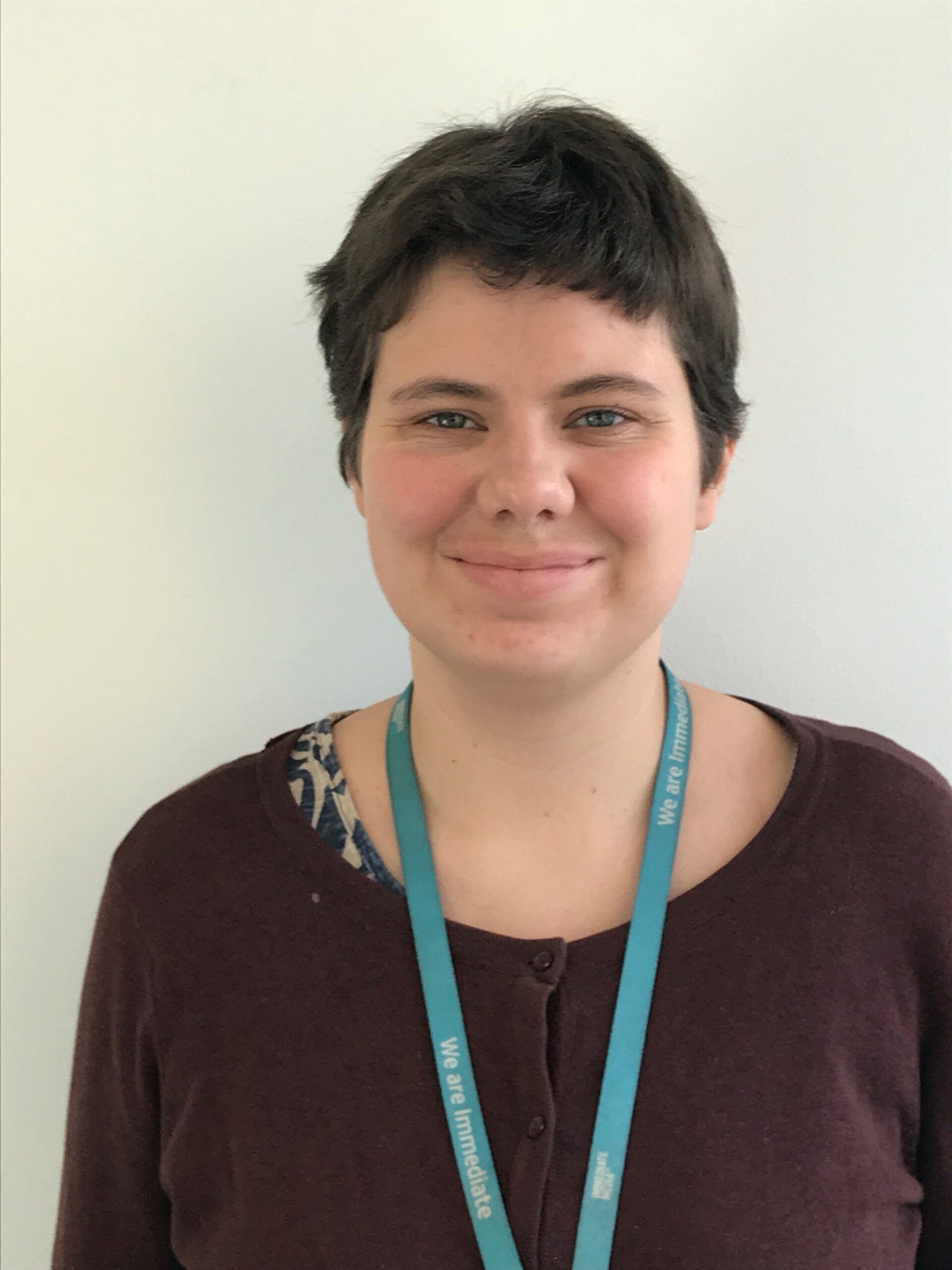Actor and comedian Aisling Bea was born on 16 March 1984 in Kildare, Ireland. At the start of her episode of Who Do You Think You Are?, she says she attributes her outspoken personality to being raised by a “big gang of very vocal alpha females”. Aisling’s father Brian died when she was three. She says she wants to investigate rumours about a connection between her father’s family and the Irish War of Independence. She also wants to find the origins of the long line of independent women in her family.
To start, Aisling goes to Ireland to visit her aunt Bernie and mother Helen. Bernie has traced their family tree back to Aisling’s 3x great grandparents, James and Martha Sheehy. To find out more, Aisling heads to Limerick, where her grandmother was from.
She meets historian Dr Richard McMahon. He says that tithe applotment books show that James and Martha were middle-class farmers who owned forty acres of land. But in 1841 their house was attacked by a mob of rioting farm labourers and James was killed.
A letter Martha wrote in 1844 survives, in which she appeals for financial help to repair the damage to her home. However, it’s not clear if Martha was exaggerating her plight.
In 1845, the Great Famine struck Ireland. However, Martha was able to profit during the Famine by taking over her neighbours’ lands as they were evicted due to poverty.
Aisling is left with a complicated legacy to consider. On the one hand, she says, Martha was a woman who was able to “look after herself and stand her ground – literally, stand on her ground”, like the many strong women in Aisling’s family after her. On the other hand, she profited off the destitution of others during one of the worst times in Ireland’s history: “When we look back at history, we’re judging it by our current standards, and what we think we might have done, but it’s almost like judging people as if they had more choice than they had. It’s definitely more of a nuanced, complicated reaction I’m having, than a simple one of ‘You go, girl!’”
Next, Aisling wants to find out about her father’s side of the family, particularly her great grandfather Pádraig O’Briain. She travels to Ballyferriter in County Kerry, where Pádraig lived. She meets historian Dr Daithí Ó Corráin, who shows her Pádraig’s entry in the 1911 census records, which gives his profession as schoolteacher. He’s filled in the record in Irish – an act of protest for Irish independence.
In 1913, the Irish Volunteers, a paramilitary organisation fighting for Irish independence, was formed. In 1914, Britain passed the Home Rule Act, which granted Ireland self-government, but it suspended the act for the duration of the First World War. This caused a schism in the Volunteers about whether or not to join the British army in the war. A copy of the Irish Volunteer newspaper shows that Pádraig, as secretary of the Ballyferriter company of Volunteers, was one of those who opposed joining the British and supported continuing the fight for Irish independence.
In 1916, the Irish Volunteers joined the Easter Rising, a planned armed rebellion against British rule. Eyewitness testimonies show that the Ballyferriter company assembled at a skating rink in Tralee, the headquarters of the Irish Volunteers, in preparation for the Rising. Despite having a wife and a young child, Pádraig was willing to risk everything for Irish independence.
However, the Rising went awry. The Volunteers were awaiting the arrival of the Aud, a disguised ship carrying arms from the German government. But the ship arrived too early and couldn’t contact the Volunteers. Austin Stack, who was in charge of the operation to offload the arms, was arrested. The Aud was captured by the Royal Navy and the captain had to scuttle the ship. The Ballyferriter Volunteers had to go back home.
Instead of a national uprising starting on Easter Sunday, the Rising took place the following day and was largely confined to Dublin. After six days of fighting, the rebels were defeated. However, the fight for Irish independence went on. Pádraig’s wife Ellen died in 1920, leaving him a widower with three children. He wouldn’t have been able to take up arms in the Irish War of Independence, which started in 1919. But his obituary from 1965 shows that he was known as a Gaelic scholar and journalist, making sure that the Irish language survived.
“In a sense, he chose a more peaceful form of fighting for our own freedom,” Aisling says. “Rather than picking up arms, it turned out to be education, the preservation of our language, and that’s something that’s so beautiful.”
Aisling is pregnant with her first child, a girl, and she thinks Pádraig would be proud that she plans to call her daughter Saoirse, the Irish for ‘freedom’: “If we could get in a little time machine I’d love to go back and tell him ‘That is what happens, just so you know, and I’m so thankful for all the efforts you’re going through now to get me to there’.”
Next, Aisling goes to the remote Blasket Islands off the west coast of Ireland to find out more about her 2x great grandmother Áine O’Donoghue, Ellen’s mother. Great Blasket Island’s last inhabitants left in 1953. Records show that Áine was the first teacher to work on the island. She carried on teaching after she married and had children and lived to be 80.
“I feel like on this journey there’s been such specific points in history that I learned about as a kid in school – the famine, the 1916 Rising, the revival of the Irish culture – and now suddenly I have all these personal connections and stories within all those moments of history,” Aisling says.

